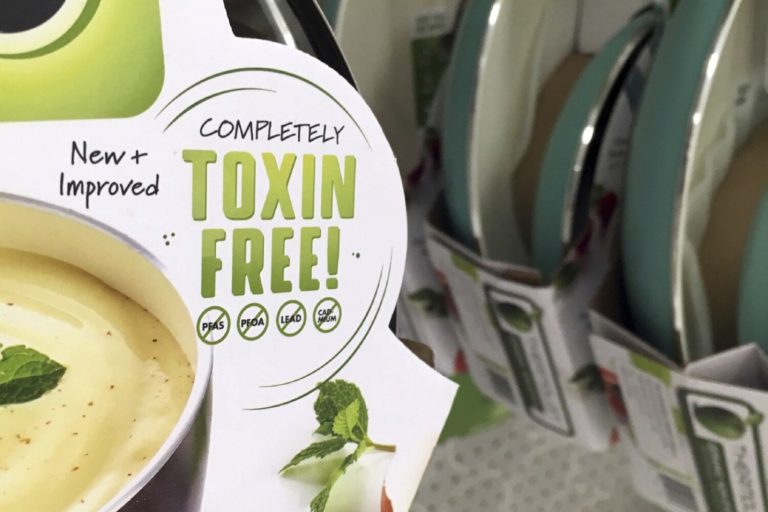Blog post: FDA must abandon flawed assumptions when reviewing safety of PFAS uses in food
By Tom Neltner | Environmental Defense Fund Blog | August 5, 2019

Read the full article by Tom Neltner (Environmental Defense Fund)
“In its June 2019 release of a webpage dedicated to per- and poly-fluoroalkyl substances (PFAS) in food, FDA stated that it is ‘reviewing the limited authorized uses of PFAS in food contact applications.’ As we mentioned in a previous blog, we were pleased to see FDA’s public position on PFAS but we highlighted three major concerns that could impact the ongoing safety review and questioned the conclusion that all is fine. In this blog, we discuss the implications of FDA’s statements on its review of 62 authorized PFAS uses in contact with food and make recommendations to the agency as it proceeds with this promising effort.
FDA authorized uses are mixtures of PFAS
According to FDA’s Food Contact Substance Notification (FCN) Inventory,[1] in the past 20 years, the agency has allowed 69 PFAS notices submitted by 19 different companies to become ‘effective’ – which essentially is an approval by FDA. Of these, three companies have voluntarily ceased the use of seven FCNs because they involved long-chain PFAS[2] – thus we are considering these seven inactive. This leaves 62 active FCNs[3] for mixtures of PFAS of mostly unknown composition, various lengths of fully-fluorinated carbon chains, and concentrations of PFAS.
The vast majority of the 62 active FCNs include polymers that the agency has determined have little ability to be absorbed by the body and, therefore, pose little risk to human health. However, as we noted in a previous blog, impurities – such as monomers, oligomers, and degradation byproducts –present in a polymer product can be absorbed by the body and could affect various organs.
FDA should be using reference doses for PFOA/PFOS to inform its safety assessment of other PFAS
In its webpage, FDA stated that ‘[f]or PFAS found in food, the FDA currently uses the U.S. Environmental Protection Agency’s [EPA] reference doses (RfD) for PFOA[4] and PFOS[5] of 0.02 µg/kg bw/day[6] as the most appropriate toxicity reference value (TRV).’ The RfD is the lowest exposure determined to be safe and is commonly based on toxicology information for individual chemicals. We took FDA’s statement to mean that the agency’s safety assessment consisted of treating PFAS as a class and applying the RfD to each member of the PFAS family and, possibly, collectively for the combined exposure to all PFAS in the diet. .
After checking with FDA, we learned that the RfD would only apply to long-chain PFAS for which it tested in food, and did not explain what RfD it used for the short-chain PFAS. However, because the agency lacks an alternative RfD for short-chain chemicals, and these are the most common PFAS covered by the 62 active FCNs, we think the agency should use the most protective RfD – the one proposed by CDC as its minimal risk level (MRL) in its PFOS safety review, that is an order of magnitude lower than EPA’s.
With both EPA’s RfD and CDC’s proposed RfD in mind, we looked closely at FDA’s response to our 2017 FOIA for 31 FCNs that we considered significant at the time. We think this approach is appropriate because most of the FCNs covered a mixture of PFAS and the toxicology information was insufficient to identity ‘safe doses.’
We found:
- 15 FCNs where the exposure estimates for at least one PFAS covered by the notice exceeded the 2016 EPA RfD for PFOA and PFOS; and
- All FCNs contained unredacted estimated exposures for the listed PFAS that exceeded the CDC 2018 RfD[7] for PFOS.
Our analysis does not include the combined exposure to all the PFAS covered by the FCNs. It also does not adjust for the existing contamination of the food supply, drinking water, and the human body. If these were considered – as FDA is required to do under the law – we would anticipate that all exposure to PFAS in all active FCNs would likely be above EPA’s RfD and therefore considered unsafe – meaning that there is no longer ‘a reasonable certainty in the minds of competent scientists that the substance is not harmful under the conditions of its intended use.’[8]…
As FDA proceeds with its review of authorized PFAS in FCNs, we recommend that the agency:
- Notify PFAS manufacturers that FDA has determined that all 62 active PFAS FCNs are no longer effective...
- Ensure that companies provide all relevant data as required by law...
- Test foods for mixtures of PFAS in the active FCNs...
- Require companies to provide comprehensive estimates of environmental releases of their products...
- Demand that the companies provide samples of the products for each of the FCNs...
Summary
As we said in the previous blog, it is a positive step that FDA made public its position on PFAS food contamination, released the three studies and committed to review the safety of intentional uses of PFAS authorized for use in food packaging. However, we are concerned that – our examination of PFAS included in 31 FCNs – FDA’s estimated exposures already exceed the most protective reference dose provided by the CDC for PFAS as a class. For the agency to be successful in protecting the public from ongoing exposures to these hazardous chemicals, it needs to begin the process of revoking the effectiveness of all PFAS FCNs and act quickly if the companies do not provide compelling evidence that the uses are safe.”
This content provided by the PFAS Project.
Location:
Topics: